- Your cart is empty
- Continue Shopping
DOSAGE AND ADMINISTRATION
Heterozygous Hypercholesterolemia (Familial and Nonfamilial) and Mixed Dyslipidemia (Fredrickson Type lla and llb)
The usual recommended starting dose of Rosuvastatin is 10 mg once daily. Initiation of therapy with 5 mg once daily may be considered for patients requiring less aggressive LDL-C reductions or who have predisposing factors for myopathy. For patients with marked hypercholesterolemia (LDL-C > 190 mg/dl) and aggressive lipid targets, a 20 mg staring dose may be considered. The 40 mg dose of Rosuvastatin should be reserved for those patients who have not achieved goal LDL-C at 20 mg. After initiation and/or upon titration of Rosuvastatin, lipid levels should be analyzed within 2 to 4 weeks and dosage adjusted accordingly.
Homozygous Hypercholesterolemia (Familial)
The recommended starting does of Rosuvastatin is 20 mg once daily in patients with homozygous FH. The maximum recommended daily does is 40 mg. Rosuvastatin should be used in these patients as an adjunct to other lipid-lowering treatments (e.g. LDL apheresis) or if such treatments are unavailable.
Patients with renal Insufficiency
No modification of dosage is necessary for patients with mild to moderate renal insufficiency. For patients with severe renal Impairment (CLcr< 30 mL/min/1.73 m2) not on hemodialysis, dosing of Rosuvastatin should be started at 5 mg once daily and not to exceed 10 mg once daily.
Dosage in Asian Patients
Initiation of Rosuvastatin therapy with 5 mg once daily should be considered for Asian patients.
Use with Cyclosporine, Lopinavir/Ritonavir or Atazanavir/Ritonavir
In patients taking Cyclosporine, the dose or Rosuvastatin should be limited to 5 mg once daily. In patients taking Lopinavir and Ritonavir or Atazanavir and Ritonavir the dose of Rosuvastatin should be limited to 10 mg once daily.
CONTRAINDICATION
Rosuvastatin is contraindicated in patients with a known hypersensitivity to any component of this product. Rosuvastatin is contraindicated in patients with active liver disease or with unexplained persistent elevations of serum transaminases.
SIDE EFFECT
Rosuvastatin is generally well tolerated. The most frequent adverse events thought to be related to Rosuvastatin were myalgia, constipation, asthenia, abdominal pain and nausea.
DRUG INTERACTION
Erythromycin: Co-administration of Erythromycin with Rosuvastatin decreased AUC and Cmax of Rosuvastatin by 20% and 31%, respectively. Itraconazole: Itraconazole resulted in a 39% and 28% increase in AUC of Rosuvastatin after 10 mg and 80 mg dosing, respectively. Fluconazole: Co-administration of Fluconazole with Rosuvastatin resulted in a 14% increase in AUC of Rosuvastatin. Warfarin: Co-administration of Warfarin (25 mg) with Rosuvastatin (40mg) did not change Warfarin plasma concentrations but increased the international Normalized Ration (INR). Gemfibrozil: Co-administration of Gemfibrozil (600 mg twice daily for 7 days) with Rosuvastatin (80 mg) resulted in a 90% and 120% increase for AUC and Cmax of Rosuvastatin, respectively. Antacid: Co-administration of an antacid (aluminum and magnesium hydroxide combination) with Rosuvastatin (40 mg) resulted in a decrease in plasma concentrations of Rosuvastatin by 54%. Oral contraceptives: Co-administration of oral contraceptives (Ethinyl Estradiol and Norgestrel) with Rosuvastatin resulted in an increase in plasma concentrations of Ethinyl Estradiol and Norgestrel by 26% and 34% respectively.
USE IN PREGNANCY AND LACTATION
Rosuvastatin should be administered to women of childbearing age only when such patients are highly unlikely to conceive and have been informed of the potential hazards. If the patient becomes pregnant while taking this drug, therapy should be discontinued immediately. It is not known whether Rosuvastatin is excreted in human milk.
USE IN PEDIATRIC PATIENTS
The safety and effectiveness of pediatric patients have not been established.
STORAGE CONDITION
Store in a cool and dry place below 25C temperature, protected from light and moisture. Keep all medicines out of the reach of children.
Ambar 5 Tablet: Each box contains 3×10 / 5×10 tablets in blister pack.
Ambar 10 Tablet: Each box contains 2×10 / 3×10 tablets in blister pack.


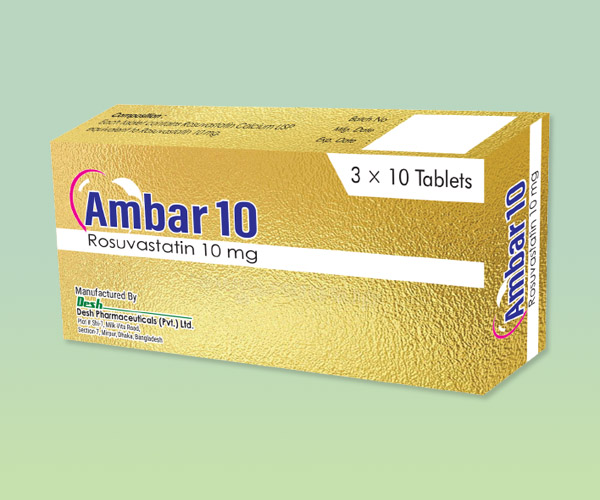
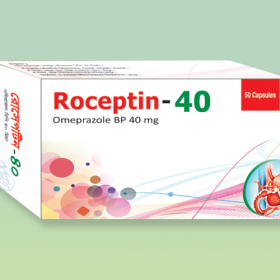
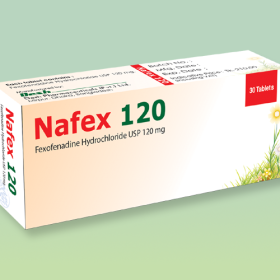
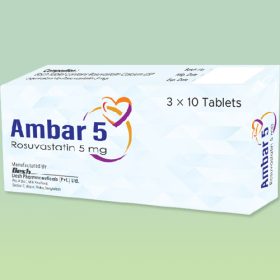
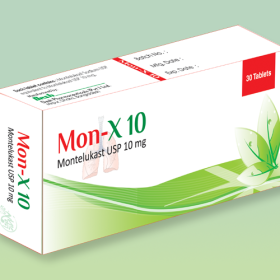
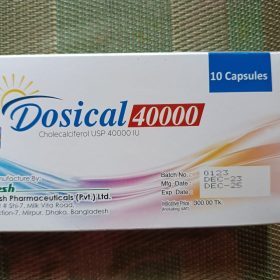
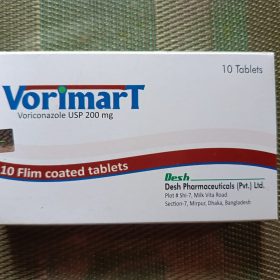
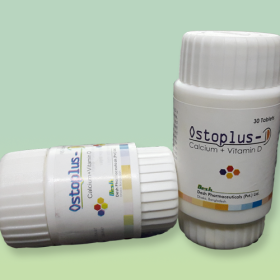
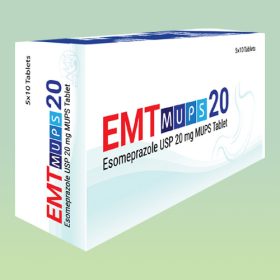
Reviews
There are no reviews yet.